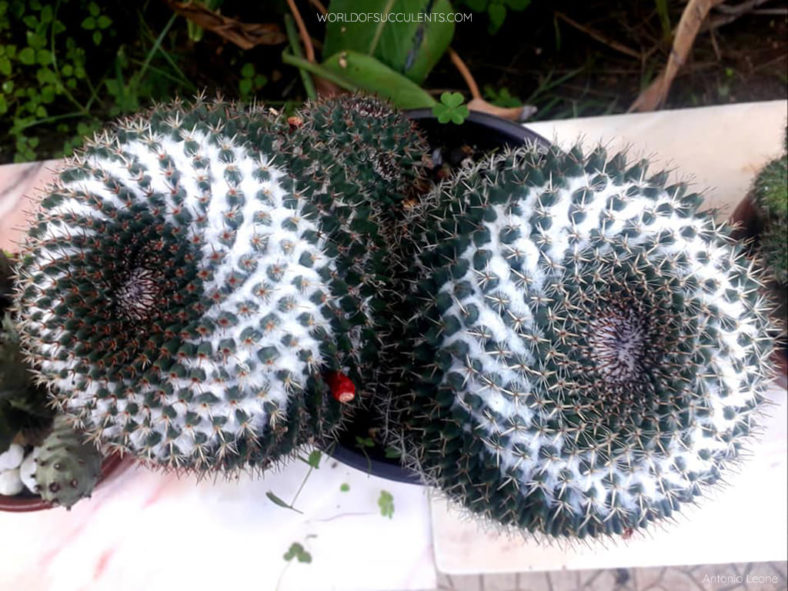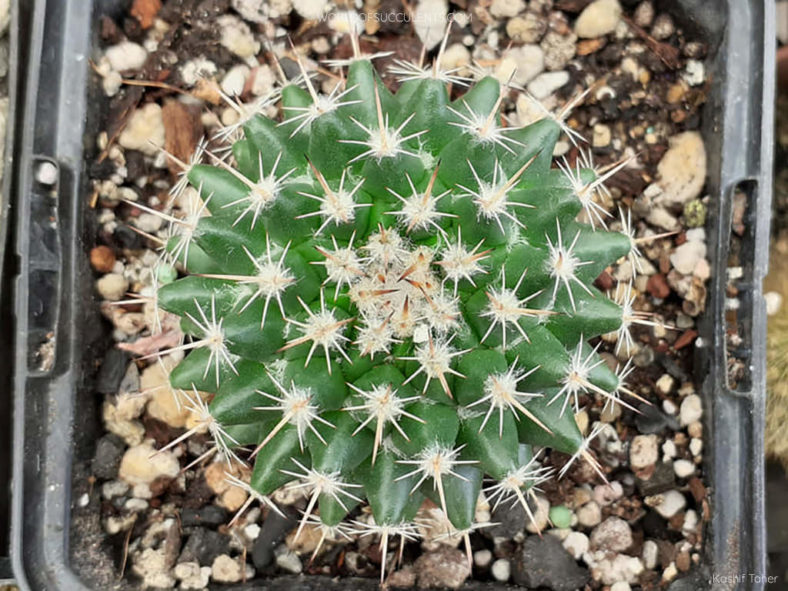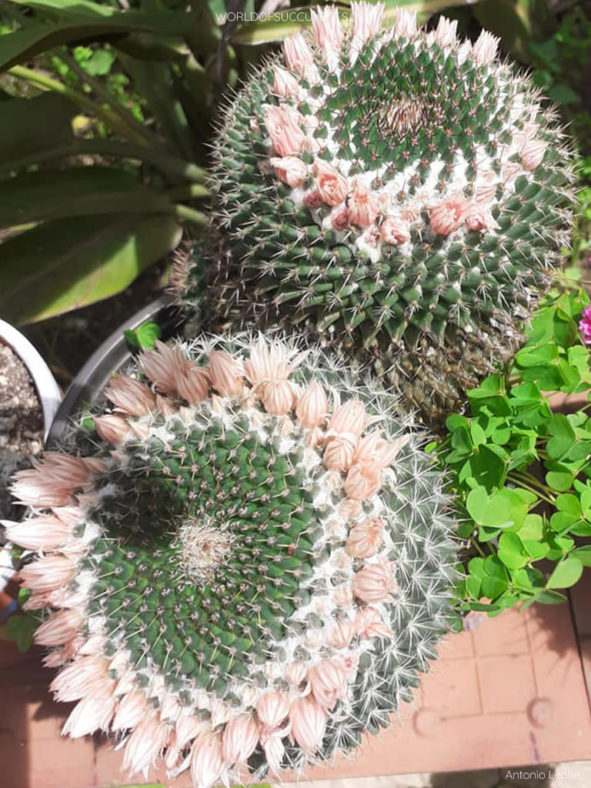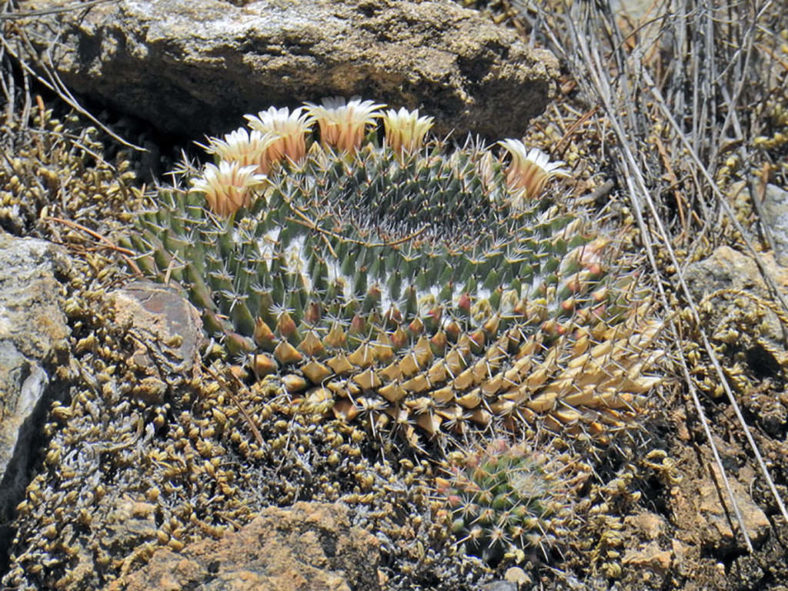Scientific Name
Mammillaria sempervivi DC.
Synonym(s)
Cactus sempervivi, Neomammillaria sempervivi
Scientific Classification
Family: Cactaceae
Subfamily: Cactoideae
Tribe: Cacteae
Subtribe: Cactinae
Genus: Mammillaria
Etymology
The specific epithet "sempervivi (sem-per-VEE-vi)" means "always (forever) alive" and probably refers to the long lifespan of the cactus.
Origin
Mammillaria sempervivi is native to central and northern Mexico. It occurs on calcareous soils in Hidalgo, Queretaro, Guanajuato, San Luis Potosi, and Nuevo Leon at altitudes ranging between 3,950 and 7,400 feet (1,200 to 2,250 m).
Description
Mammillaria sempervivi is a small cactus with flattened globose to depressed globose stems with pyramidal tubercles and an abundance of white wool in the axils. The stems can grow up to 6 inches (15 cm) in diameter, solitary at first and slowly clumping with age. Each areole bears 2 to 6 radial and 2 to 3 central spines. The radial spines are bristle-like, measuring about 0.1 inches (0.3 cm) long. They are mostly hidden under the wool and usually present only on young stems. The central spines are short and stout, reddish-brown to black, becoming grey with age, and can grow about 0.15 inches (0.4 cm) long.
The flowers are funnel-shaped and appear in a ring around the crown of the stem in spring, barely rising above the tubercles. They can reach up to 0.8 inches (2 cm) in length and nearly equal in diameter. The red, club-shaped fruits can grow up to 0.4 inches (1 cm) long.

How to Grow and Care for Mammillaria sempervivi
Light: Plant this cactus in an area of your garden that receives 4 hours of direct sunlight daily. If you are growing M. sempervivi indoors, place it near the brightest window in your home or office to ensure your cactus gets enough light. Place the pot on the balcony or in the garden for extra light from spring to fall if possible.
Soil: M. sempervivi requires a soil mix that provides root aeration and good drainage, whether grown outdoors or indoors. Use a commercial cactus potting mix, or create your own.
Temperature: This cactus is heat tolerant but not a cold-hardy plant. M. sempervivi can withstand temperatures as low as 30 °F (-1.1 °C). USDA Plant Hardiness Zones 10a to 11b, 30 to 50 °F (-1.1 to 10 °C).
Watering: From spring to fall, water deeply and wait for the soil to dry before watering again. Never let the pot sit in water. Suspend watering in the winter.
Fertilizing: M. sempervivi can benefit from fertilizing during the growing season. Apply a water-soluble fertilizer for cacti and other succulents. Suspend feeding during the winter when the plant goes dormant.
Repotting: Repot every two or three years into a slightly larger pot. The best time to repot your M. sempervivi is late winter or early spring, but the repotting process can be done almost any time of the year.
Propagation: There are two easy ways to propagate M. sempervivi: by seeds or by dividing offsets. The best time to remove offsets is in spring and summer. Sow the seeds in late spring or summer.
Learn more at How to Grow and Care for Mammillaria.
Toxicity of Mammillaria sempervivi
M. sempervivi is considered non-toxic to both humans and pets.
Links
- Back to genus Mammillaria
- Succupedia: Browse succulents by Scientific Name, Common Name, Genus, Family, USDA Hardiness Zone, Origin, or cacti by Genus
Photo Gallery
Click on a photo to see a larger version.


